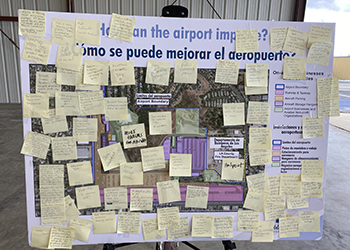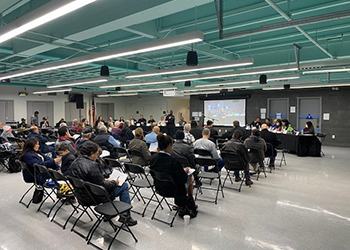The Crucial Role of Public Participation in Projects

Public involvement on our projects has grown immensely in many sectors over the past 10 years. Public participation is not just a formality, but a cornerstone of successful project execution. Engaging the community early and often in the planning and development stages can significantly enhance the project’s outcomes, ensuring that it meets the needs and expectations of those it serves. Public involvement fosters transparency, builds trust, and can lead to innovative solutions that might not have been considered otherwise. Several areas of our business not only welcome public engagement but require it at a state or federal level.
Public involvement, public engagement, and community outreach all refer to efforts aimed at actively involving the community and sharing project information in accessible and convenient ways. One of the primary reasons public participation is crucial is that it provides a platform for diverse perspectives. Community members bring unique insights and local knowledge that can help identify potential issues and opportunities that professionals might overlook. This collaborative approach leads to more sustainable and contextually appropriate designs, resulting in projects that are better received by the public and more likely to succeed in the long term.


Public Meetings, Workshops and Online Tools
There are several effective ways to involve the public in the planning efforts of projects. Public meetings and workshops are traditional yet powerful methods for gathering input and fostering dialogue. These events allow community members to voice their opinions, ask questions, and provide feedback directly to the project team. Additionally, online surveys and interactive platforms can reach a broader audience, making it easier for people to participate at their convenience. Social media campaigns, custom websites, and virtual town halls are also excellent tools for engaging with the community and keeping them informed throughout the project lifecycle.
Advisory Committees
Another aspect of public participation is the establishment of advisory committees or focus groups. These groups, composed of community representatives, stakeholders, and subject matter experts, can provide ongoing guidance and ensure that the project remains aligned with public interests. By involving these committees in decision-making processes, trust is built with the community.
While some may find working with the public challenging, the most important lesson I’ve learned from my experience is that people simply want to be heard. By actively involving the community and listening to their concerns, we can create more resilient, inclusive, and well-received developments. As projects move forward, it’s important to prioritize public engagement, acknowledging its essential role in shaping the built environment for the better.

Principal Consultant